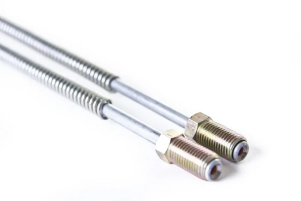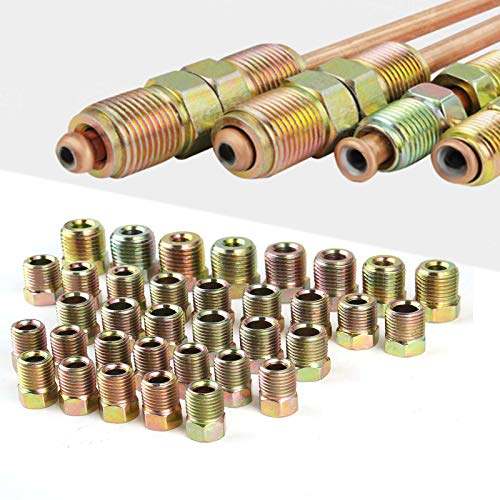Before we get into the different types of brake line flares, it is important that you first understand the purpose of brake lines for your car’s braking system.
There are two different types of brake lines used on vehicles today: flexible and rigid lines. The role of all brake lines in the braking system is to transport brake fluid to the wheel cylinders, activating the caliper and brake pads, which work to apply pressure to the rotors (discs) and stop the car.
The rigid brake line is connected to the master cylinder and a flexible brake line (hose) is used on the end to connect the brake line to the braking system moving parts – the wheel cylinders and calipers.
A flexible hose is needed to withstand the movement of the wheels, the system would not be as effective if all parts of the brake line were made of rigid steel.
However, some car manufacturers do use thin and flexible braided steel brake lines at the wheel cylinder.
Braided steel allows the brake lines the freedom of movement that is needed at the wheel connection but is also stronger and more durable than the traditional rubber lines which can be prone to leaks and damage.
Brake Line Flares
To help create a stronger connection and prevent brake fluid leaks from occurring, brake line flares are used. The flares on brake lines make it possible to connect the components together more securely.
Without the flares, the brake lines may leak at the connection points, as the pressure of the brake fluid moving through the lines can become too intense.
Brake line flares need to be strong to keep a secure connection and to effectively stop leaks. The majority of brake line flares are made from either nickel-copper alloy, stainless steel, or galvanized steel.
As well as being strong, it is important that the brake line flare components are corrosion resistant. If rust builds up on the brake flares, they are less likely to work correctly and they may need to be replaced prematurely.
Post time: Oct-21-2022


